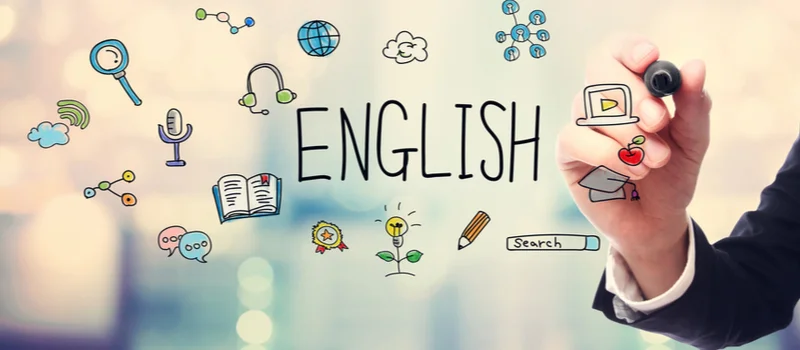- Home
- About Us
- Academic
- Bachelor of Education (B.Ed., - 2 Yrs)
- Integrated (B.Sc.,B.Ed., - 4 Yrs)
- Regulations and Syllabus
- Our Campus
- Admission
- Activities
- Clubs
- IQAC
- Students Support
- Links
- Gallery
- Alumini
- Contact Us

Meaning, Nature, Scope, Need and Significance, Values,Aims and Objectives: Instructional objectives and Behavioural Objectives – Need and Importance of Instructional Objectives. Bloom’s Taxonomy of Instructional Objectives: Cognitive, Affective and Psychomotor Domains, Revised Bloom’s Taxonomy 2001 (Anderson &Krathwohl) Interrelation among the domains – Correlation between subjects.
Approaches of Lesson Planning - Steps - Organizing Teaching: Memory Level (Herbartian Model), Understanding Level (Morrison teaching Model), Reflective Level (Bigge and Hunt Teaching Model)– Unit Plan – Lesson Plan Writing.
Micro-Teaching : Concept, Definition, Steps, Cycle , Micro-teaching Vs Macro-Teaching - Skill of Set Induction - Skill of Explaining , Skill of Questioning , Probing skills, Skill of Stimulus Variation, Skill of Reinforcement, Skill of non-verbal clues, Skill of Closure - Link lesson – Model episode
Teacher Centered Instruction: Lecture method, Demonstration and Team Teaching – Learner Centered Instruction: Self-Learning – Forms of Self-Learning: Programmed Instruction, Computer Assisted Instruction , Keller Plan, Project Method, Activity Based Learning (ABL), Active Learning Method (ALM)-Mind Map, Advanced Active Learning Method (AALM).
Classification of Instructional Media – Use of Mass media in classroom Instruction. New Emerging Media: Tele-Conferencing, Communication Satellites, Computer Networking, Word Processors, Blended Learning, Flipped Classroom, Artificial Intelligence, Augmented Reality

Commerce: Meaning, Nature and Scope – Aims and objectives of teaching Commerce in schools: Instructional objectives and Behavioural Objectives – Need and Importance of Instructional Objectives. Bloom’s Taxonomy of Instructional Objectives: Cognitive, Affective and Psychomotor Domains, Revised Bloom’s Taxonomy 2001 (Anderson & Krathwohl) Interrelation among the domains – Correlation between subjects– Values of Teaching Commerce.
Micro-Teaching: Concept, Definition, Steps, Cycle - Micro-teaching Vs Macro-Teaching - Skill of Set Induction - Skill of Explaining, Skill of Questioning, Probing skills, Skill of Stimulus Variation, Skill of Reinforcement, Skill of non-verbal clues, Skill of Closure - Link lesson – Model episode.
Approaches of Lesson Planning - Steps - Organizing Teaching: Memory Level (Herbartian Model), Understanding Level (Morrison teaching Model), Reflective Level (Bigge and Hunt Teaching Model) – Unit Plan – Lesson Plan Writing.
Teacher-centred Instruction: Lecture method, Demonstration and Team teaching – Learnercentred Instruction: Self-learning, Forms of Self-Learning: Programmed Instruction, Computer Assisted Instruction, Keller Plan, Project Method, Activity Based Learning (ABL), Active Learning Method (ALM)-Mind Map and Advanced Active Learning Method (AALM).
Classification of Instructional Media in Commerce – Use of Mass media in classroom Instruction. New Emerging Media: Tele-Conferencing, Communication Satellites, Computer Networking, Word Processors, Blended Learning, Flipped Classroom, Artificial Intelligence and Augmented Reality - Community Resources: Fieldtrips - Commerce Exhibition/Fair - Commerce Resource Centre - Commerce Club - Qualities of a good commerce textbooks - Qualities of a good Commerce teacher.

Meaning, Nature, Scope, Need and Significance, Values, Aims and Objectives - Instructional Objectives and Behavioural Objectives – Need and Importance of Instructional Objectives. Bloom’s Taxonomy of Instructional Objectives: Cognitive, Affective and Psychomotor Domains, Revised Bloom’s Taxonomy 2001 (Anderson & Krathwohl) Interrelation among the domains – Correlation between subjects
Micro-Teaching: Concept, Definition, Steps and Cycle - Micro-teaching Vs Macro-Teaching - Skill of Set Induction - Skill of Explaining, Skill of Questioning, Probing skills, Skill of Stimulus Variation, Skill of Reinforcement, Skill of non-verbal clues, Skill of Closure, Mapreading Skill, Skill of Black Board Usage - Link lesson – Model episode.
Approaches of Teaching History: The Concentric Approach, Topical Approach, Chronological Approach, Unit Approach, Correlated Approach and Integrated Approach - Lesson Planning: Need for Lesson Planning, Steps in Lesson Planning, - Organizing Teaching: Memory Level (Herbartian Model), Understanding Level (Morrison teaching Model), Reflective Level (Bigge and Hunt Teaching Model)– Unit Plan – Lesson Plan Writing.
Teacher-centred Instruction: Lecture method, Demonstration and Team teaching – Learnercentred Instruction: Self-learning, Forms of Self-Learning: Programmed Instruction, Computer Assisted Instruction, Keller Plan, Project Method, Activity Based Learning (ABL), Active Learning Method (ALM)-Mind Map and Advanced Active Learning Method (AALM).
Meaning- Need and Importance of Instructional Aids – Psychological Bases of Hardware and Software Technologies: Edgar Dale’s Cone of Experiences, Multi-sensory Instruction – Hardware Instructional Aids: Motion Pictures, Computers, Projectors and Tab – Software Instructional Aids: Geotag, Charts, Maps, Globes, Cartoons, Posters, Newspapers - Use of Mass Media in classroom Instruction - New Emerging Media: Tele-Conferencing, Communication Satellites, Computer Networking, Word Processors, Blended Learning, Flipped Classroom, Artificial Intelligence and Augmented Reality.

Physical Science: Meaning, Nature, Scope, Need and Significance of teaching Physical Science - Values,Aims and Objectives of teaching Physical Sciencein Schools - Instructional objectives and Behavioural Objectives of Physical Science - Need and Importance of Instructional Objectives. Bloom’s Taxonomy of Instructional Objectives: Cognitive, Affective and Psychomotor Domains, Revised Bloom’s Taxonomy 2001 (Anderson & Krathwohl).
Micro-Teaching : Concept, Definition, Steps, Cycle - Skill of Set Induction - Skill of Explaining, Skill of Questioning, Skill of Explaining, Skill of Stimulus Variation, Skill of Reinforcement, Skill of Closure - Link lesson – Model episode.
Approaches of Lesson Planning - Steps - Organizing Teaching: Memory Level (Herbartian Model), Understanding Level (Morrison teaching Model), Reflective Level (Bigge and Hunt Teaching Model)– Unit Plan – Lesson Plan Writing.
Teacher Centered Instruction: Lecture method, Demonstration and Team Teaching – Learner Centered Instruction: Self-Learning – Forms of Self-Learning: Programmed Instruction, Investigatory approach, Collaborative learning, experimental learning, Computer Assisted Instruction, Keller Plan, Project Method, Activity Based Learning (ABL), Active Learning Method (ALM) - Advanced Active Learning Method (AALM)-Concept Map.
Classification of Instructional Media in Physical Science – Use of Mass media in classroom Instruction. New Emerging Media: Tele-Conferencing, Communication Satellites, Computer Networking, Word Processors, Blended Learning, Flipped Classroom, Artificial Intelligence and Augmented Reality.

Meaning, Nature, Scope, Need and Significance, Values, Aims and Objectives: Instructional objectives and Behavioral Objectives – Need and Importance of Instructional Objectives. Bloom’s Taxonomy of Instructional Objectives: Cognitive, Affective and Psychomotor Domains, Revised Bloom’s Taxonomy 2001 (Anderson & Krathwohl) Interrelation among the domains – Correlation between subjects.
Micro-Teaching : Concept, Definition, Steps, Cycle, Micro-teaching Vs Macro-Teaching - Micro Teaching Skills: Skill of Set Induction, Skill of Explaining, Skill of Blackboard Usage, Skill of Questioning, Probing skills, Skill of Stimulus Variation, Skill of Reinforcement, Skill of non-verbal clues, Skill of Closure - Link lesson – Model episode.
Approaches of Lesson Planning - Steps - Organizing Teaching: Memory Level (Herbartian Model), Understanding Level (Morrison teaching Model), Reflective Level (Bigge and Hunt Teaching Model)– Unit Plan – Lesson Plan Writing.
Teacher Centered Instruction: Lecture method, Demonstration and Team Teaching – Learner Centered Instruction: Self-Learning – Forms of Self-Learning: Programmed Instruction, Computer Assisted Instruction, Keller Plan, Project Method, Activity Based Learning (ABL), Active Learning Method (ALM)-Mind Map, Advanced Active Learning Method (AALM).
Classification of Instructional Media – Use of Mass media in classroom Instruction. New Emerging Media: Tele-Conferencing, Communication Satellites, Computer Networking, Word Processors, Blended Learning, Flipped Classroom, Artificial Intelligence, Augmented Reality.

Meaning, Nature, Scope, Need and Significance, Values, Aims and Objectives: Instructional objectives and Behavioural Objectives – Need and Importance of Instructional Objectives. Bloom’s Taxonomy of Instructional Objectives: Cognitive, Affective and Psychomotor Domains, Revised Bloom’s Taxonomy 2001 (Anderson & Krathwohl) Interrelation among the domains – Correlation between subjects.
Micro-Teaching : Concept, Definition, Steps, Cycle - Micro-teaching Vs Macro-Teaching - Skill of Set Induction - Skill of Explaining , Skill of Questioning , Probing skills, Skill Stimulus Variation, Skill of Reinforcement, Skill of non-verbal clues, Skill of Closure - Link lesson – Model episode.
Approaches of Lesson Planning - Steps - Organizing Teaching: Memory Level (Herbartian Model), Understanding Level (Morrison teaching Model), Reflective Level (Bigge and Hunt Teaching Model) – Unit Plan – Lesson Plan Writing.
Teacher-centred Instruction: Lecture method, Demonstrtion and Team teaching – Learnercentred Instruction: Self-learning, Forms of Self-Learning: Programmed Instruction, Computer Assisted Instruction, Keller Plan, Project Method, Activity Based Learning (ABL), Active Learning Method (ALM)-Mind Map and Advanced Active Learning Method (AALM).
Classification of Instructional Media in English – Use of Mass media in classroom Instruction. New Emerging Media: Tele-Conferencing, Communication Satellites, Computer Networking, Word Processors, Blended Learning, Flipped Classroom, Artificial Intelligence and Augmented Reality..

தமிழ் கற்பித்தலின் அடிப்படை, விழுமம் (ஒழுக்கநெறி, சமுதாயமேன்மை, இறையுணர்வு) குறிக்கோள்களும் நோக்கங்களும்: கற்பித்தலுக்கானநோக்கங்கள் மற்றும் நடத்தைக்கானநோக்கங்கள் - தமிழ் கற்பித்தலின் தேவை, முக்கியத்துவம் - கற்பித்தலுக்கானபுளுமின் வகைமைநெறி: அறிவுக்களம், உணர்தல் களம் உளஇயக்கசார் களம் - திருத்தப்பட்டபுளுமின் வகைமைநெறி 2001(ஆண்டர்சன் &கிரத்வால்) களங்களுக்கு இடையேயானதொடர்பு, பாடங்களுக்கு இடையேயானதொடர்பு.
நுண்ணிலைக் கற்பித்தல்: பொருள்,வரையறை படிநிலைகள் - சுழற்சி - தொடங்குதல் திறன், விளக்குதல் திறன், வினாக்கேட்டல் திறன்,பல்வகைத்தூண்டல் திறன், வலுவூட்டிகளைப் பயன்படுத்தும் திறன், கரும்பலகையைப் பயன்படுத்தும் திறன், முடிக்கும் திறன்,உற்றுநோக்கல், இணைப்புப்பாடம், நுண்ணிலைக் கற்பித்தலுக்கும் வகுப்பறைக் கற்பித்தலுக்கும் இடையேயானவேறுபாடு-பாடநிகழ்வு.
பாடம் கற்பிப்புத் திட்டத்தின் அணுகுமுறைகள், இன்றியமையாமை- பாடம் கற்பித்தலின் படிநிலைகள் கற்பித்தலைஒழுங்கமைத்தல்: நினைவகநிலை (ஹெர்பார்டியன் மாதிரி), புரிதல் நிலை (மோரிசன் கற்பித்தல் மாதிரி),பிரதிபலிப்புநிலை (பிக்கி&ஹண்ட் கற்பித்தல் மாதிரி) பாடம் கற்பித்தலுக்கான நோக்கங்களை வரையறுத்தல் - பாடம் கற்பிப்புத் திட்டம் தயாரித்தல் - அலகுத்திட்டம் - அலகுத்திட்டம் தயாரித்தல்.
ஆசிரியர் மையக் கற்பித்தல்: விரிவுரைமுறை - பகுத்தறிமுறை, தொகுத்தறிமுறை, விதிவருமுறை மற்றும் விதிவிலக்கமுறை - செயல்விளக்கமுறை - மாணவர் மையக் கற்பித்தல்: கருத்தரங்கம் - பட்டிமன்றம் - குழு விவாதம் - குழு கற்பித்தல் முறை - இடைவினையாற்றகற்றல், கெல்லர் திட்டம் - செயல்வழிக்கற்றல் - படைப்பாற்றல் கல்வி - மனவரைபடம் - கூடுதல் படைப்பாற்றல் கல்வி.
கற்பித்தல் ஊடகவகைப்பாடு - வகுப்பறைக் கற்பித்தலில் ஊடகத்தின் பயன்பாடு - அண்மைக் காலகற்பித்தல் போக்குகள்:மின்-கற்றல் - விண்ணரங்கம் - தகவல் தொடர்புசெயற்கைக்கோள் - மொழிபயிற்றாய்வுக்கூடம், செயற்கைநுண்ணறிவு (Artificial Intelligence, மெய்நிகர் தோற்றம் (Augmented reality) - இணைத்துக் கற்றல் (Blended Learning) - இணைய நூலகம் இணைப்பு நிஜமாக்கம் (Virtual reality).